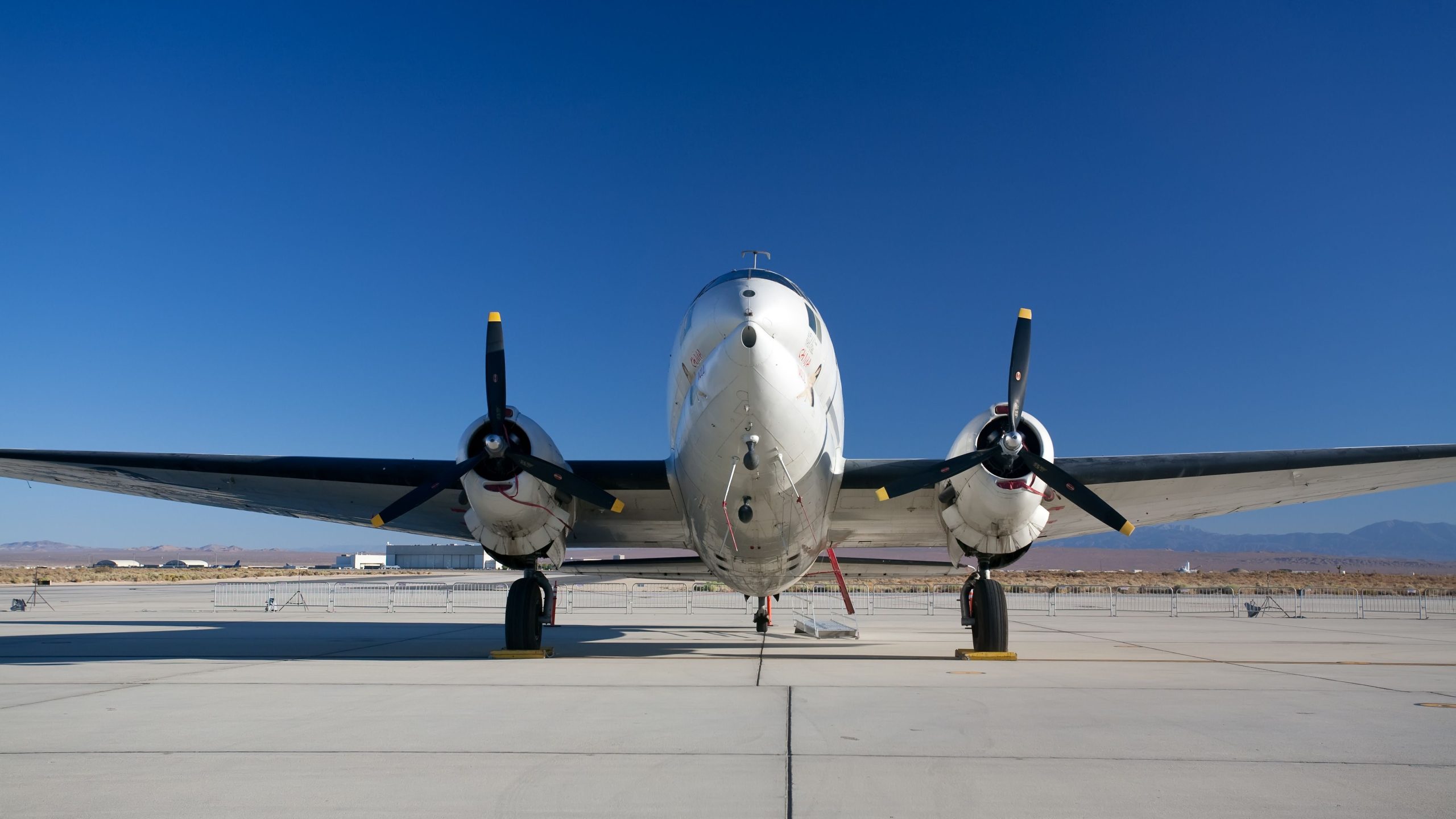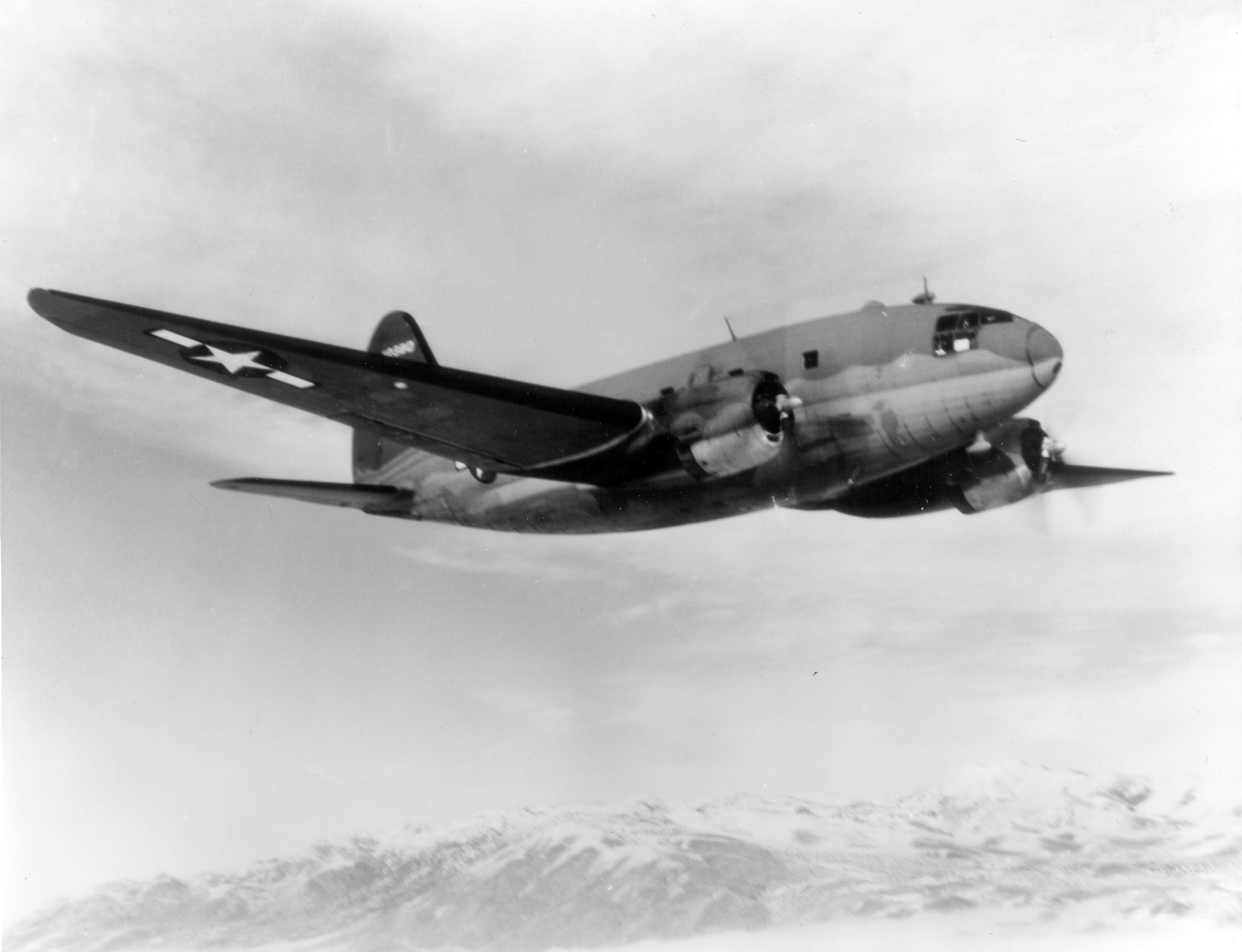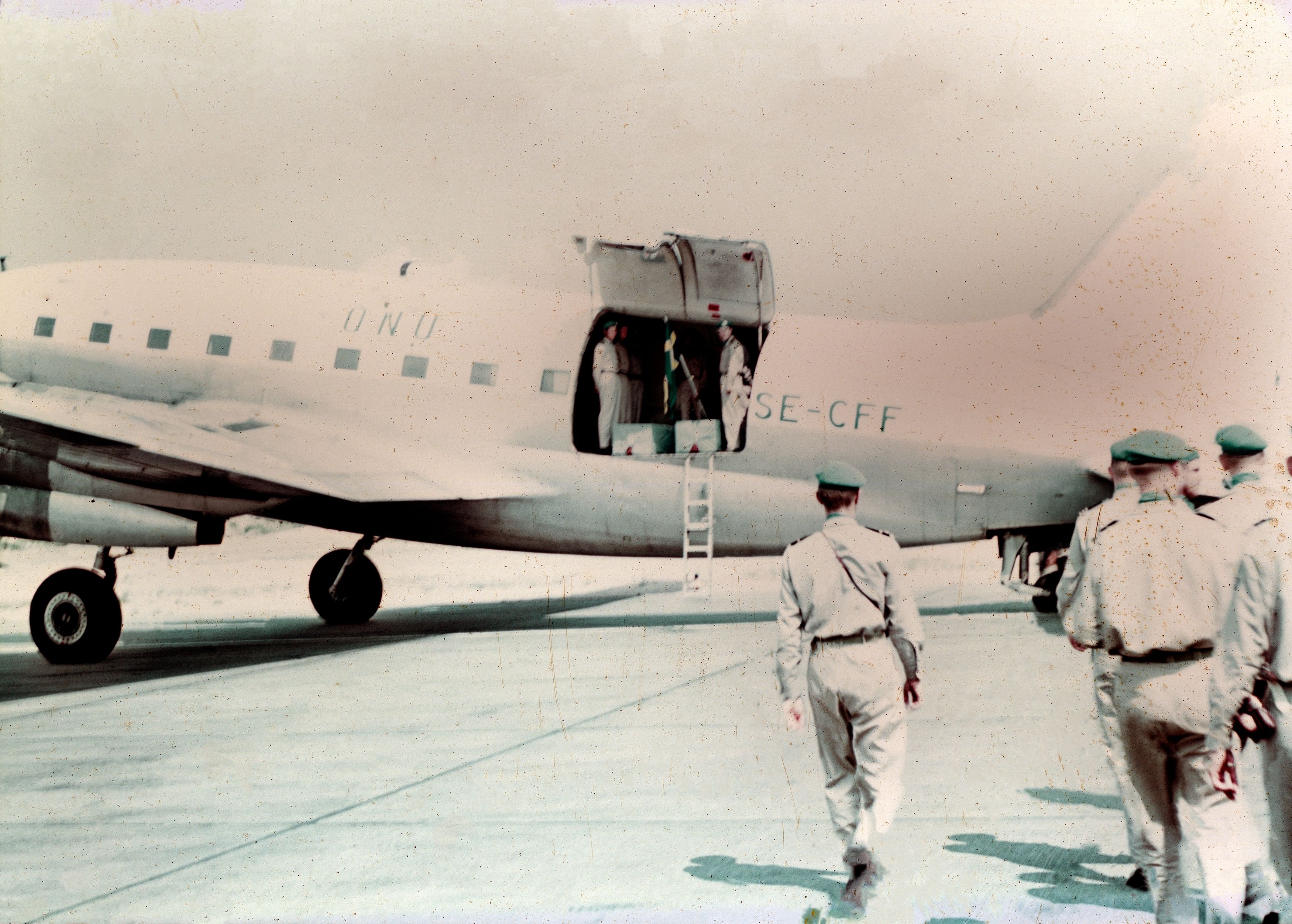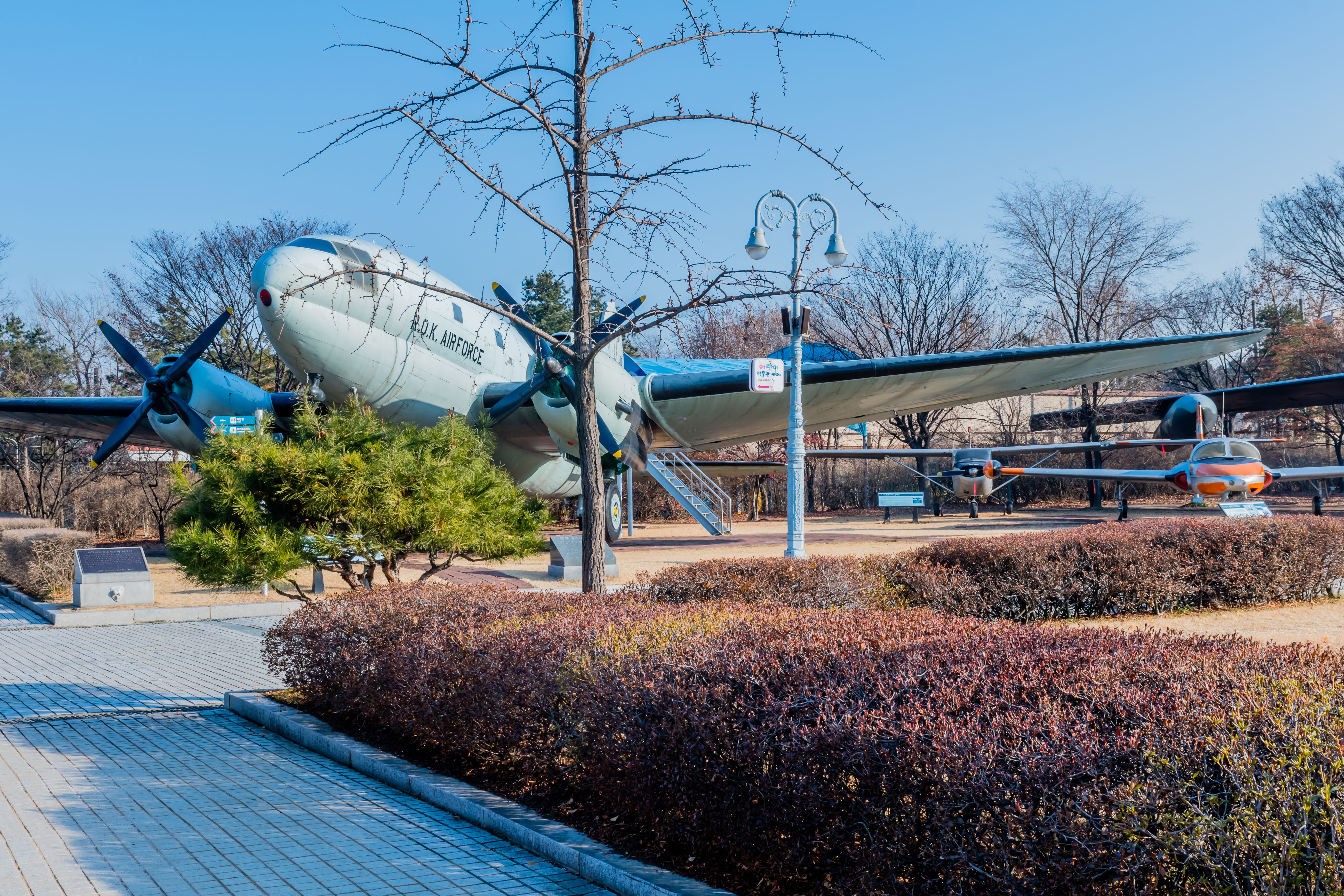Before we discuss the Curtiss C-46 Commando, it is helpful to know a little about the company that built it and how it became relevant during World War Two. Glenn Curtiss was an American aviation pioneer and a founder of one of America’s first aircraft manufacturing companies. His first company, the Curtiss Airplane and Motor Company, merged with the Wright Company in 1929 to become the Curtiss-Wright Corporation.
Designed to compete with the Douglas DC-4 and Boeing 307 Stratoliner, the Curtiss C-46 Commando was supposed to be a pressurized high-altitude airliner that could fly non-stop between New York and Chicago. When Curtiss started work on the Curtiss C-46 Commando, a future war in Europe was unimportant to the non-interventionist United States.
Curtiss decided to use two engines to power the C-46
Unlike the DC-4 with four engines, Curtiss used a high-powered twin-engine design to save fuel costs. Designed to carry between 24 and 34 passengers, the prototype aircraft made its maiden flight on March 26th, 1940. Following the maiden flight test, pilot Eddie Allen complained about the aircraft’s low-speed stability and handling when flown on a single engine. To remedy the problem, Curtiss replaced the 1,700-hp Wright Twin Cyclones with 2,000-hp Pratt & Whitney Double Wasps.
When touring the Curtiss factory in September 1940, Maj. Gen. Henry Arnold saw the potential of the C-46 as a cargo and troop carrier aircraft. The initial order from the United States military was for 46 unpressurized cargo planes.
Curtiss increased production during the war
When the United States entered the war following the surprise Japanese attack on Pearl Harbor on December 7th, 1941, Curtiss ramped up production. At the same time, Japan moved its troops from China south into French Indo-China (Vietnam). It expanded further, invading the Philippines, Malaya, Singapore, Hong Kong, Guam, Wake Island, and Thailand.
In response, President Franklin D. Roosevelt announced an airlift to help support China after the Japanese cut previous land routes through Burma. By 1942, the aircraft’s floor was reinforced due to demands from the Air Force, and large rear cargo doors and a hydraulic winch were added.
The C-46 was used extensively in the Pacific
The Curtiss C-46 Commando became the primary Allied aircraft flying supplies over the Himalayan Mountains to China. During the mission, the C-46 was the only Allied aircraft capable of handling adverse conditions like violent weather, high mountains, and poorly maintained airfields. During the campaign in the Pacific, the United States Marines relied heavily on the C-46 as it could carry twice the cargo volume of a C-47, had a long range, and could land and take off from hastily built island airstrips.
In the European theater of operations, the C-46 was used in March 1945 when it took part in Operation Varsity, a US Army paratrooper drop over the Rhine Valley. The problem the C-46 had was that it did not have self-sealing fuel tanks, and while flying low to drop paratroopers, many were lost to anti-aircraft fire.
Photo: aminkorea / Shutterstock.com
By this stage of the war, German gunners were highly efficient, and the low altitude deployment of paratroopers made them easy targets for German guns firing explosive, armor-piercing incendiary ammunition. Following heavy losses of aircraft and men, General Matthew Ridgway banned the C-46 from being used in Airborne operations.
Following the war, the C-46 failed to attract airlines’ attention because it was twice as expensive to operate as a C-47. However, it continued flying as a cargo carrier in remote mountainous areas of South America. The CIA later used the C-46 for its clandestine Air America missions.



